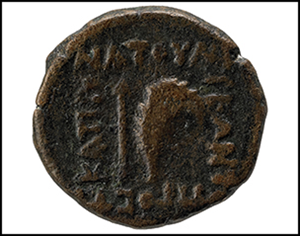 “The mountain fortress of Rabana-Merquly “ – reads the study published online – “was an important regional center of the Parthian period ( 1st century BC ) in the Zagros Mountains of Iraqi Kurdistan . The iconography of two rock reliefs showing a unnamed ruler suggests an association with the vassal kingdom of Adiabene . The exceptional preservation of the stone walls of the fortress, undamaged by later agriculture at this plateau location, provides an almost complete example of a large fortified site with two main intramural settlements “.
“The mountain fortress of Rabana-Merquly “ – reads the study published online – “was an important regional center of the Parthian period ( 1st century BC ) in the Zagros Mountains of Iraqi Kurdistan . The iconography of two rock reliefs showing a unnamed ruler suggests an association with the vassal kingdom of Adiabene . The exceptional preservation of the stone walls of the fortress, undamaged by later agriculture at this plateau location, provides an almost complete example of a large fortified site with two main intramural settlements “.
/https://tf-cmsv2-smithsonianmag-media.s3.amazonaws.com/filer_public/43/ce/43cecf28-b47d-48fc-bc91-4e8dd66cb660/rabana_merquly_fig3.jpeg)
“Through its ability to control the surrounding landscape, Rabana-Merquly highlights the role of client states on the periphery of the Parthian and Roman empires and illuminates the practical aspects of territorial control by state authorities in the inland regions.” The new study, published this week in the journal Antiquity , would support the hypothesis of archaeologists that this figure was a king of Adiabene , a vassal state of the powerful Parthian empire :

If so, the researchers write, the fortress could very well be Natounia (or Natounissarokerta ), a long-lost city named after the founder of the Adiabene dynasty, Natounissar, and known only for the existence of a treasure trove of 1st century coins . century BC In the archaeological site analyzed by the researchers ” there are detailed historical references” to Natounia, confirms lead author Michael Brown , an archaeologist from the University of Heidelberg in Germany at Artnet . “Rabana-Merquly is … the largest and most impressive Parthian-era site in the region, and the only one with royal iconography, so it is by far the best candidate. “ Another crushed evidence would be based on the appearance of the ancient coins found at the site, giving the lost city its name as Natounissarokerta , a combination of the king’s name and the Parthian word for a moat or fortification. The coins describe Natounia’s location as ” on the Kapros ” or the modern Lower River Zab .

Brown and his colleagues tentatively identified the ruler as a Natounissar based on the similarities between the Rabana-Merquly reliefs and a statue of an Adiabene king in the town of Hatra, just over 140 miles to the west. According to the study, both depictions boast characteristic fin-shaped headdresses, full beards, a raised right arm whose palm is open in ” a gesture of greeting ,” belts with hanging tapered ends, sleeveless cloaks, and neck rings. The main difference between the works of art is the presence of a sword resting on the left side of the Hatra statue.“The twin rock reliefs are rare examples of life-sized monuments of Parthian rulers and allow us to connect the fortress with those who built it,” Brown tells Live Science ‘s Jennifer Nalewicki .
Sources:
https://www.thenationalnews.com/mena/iraq/2022/07/19/closing-in-on-iraqs-lost-city-of-natounia/











